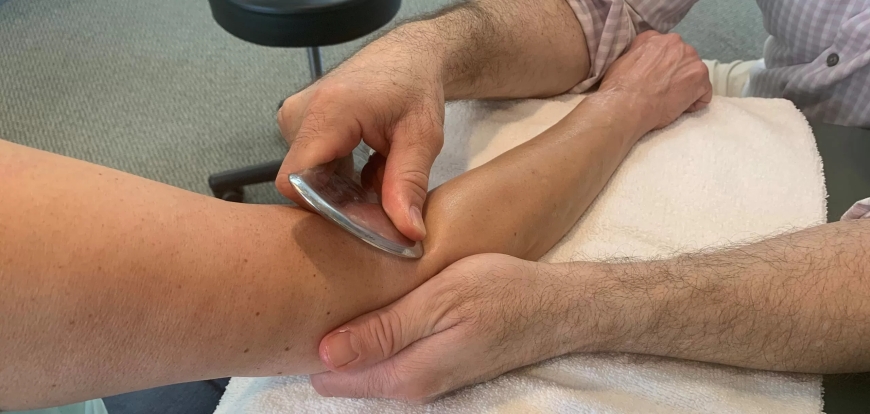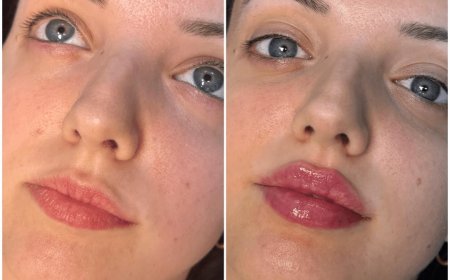A Proven Soft Tissue Technique for Pain Relief and Recovery
Discover how Graston therapy, a powerful soft tissue technique, helps relieve pain, improve mobility, and speed up healing. Learn the benefits of Graston massage and how it works.

In todays world of active lifestyles and growing physical demands, muscle stiffness, chronic pain, and sports injuries are all too common. While traditional massage and chiropractic adjustments offer relief, many people are discovering a powerful, evidence-based alternative: Graston therapy.
Known for its ability to break down scar tissue, reduce inflammation, and speed up recovery, Graston technique therapy has become increasingly popular among athletes, manual therapists, and those recovering from injury.
In this article, well explore what Graston therapy is, how it works, who its for, and why it could be the breakthrough your body needsespecially if youve struggled with long-standing muscle or joint pain.
What Is Graston Therapy?
Graston therapy, also known as Graston technique therapy, is a form of instrument-assisted soft tissue mobilization (IASTM). It involves the use of specially designed stainless steel tools to gently scrape and massage areas of soft tissue dysfunction.
Unlike traditional massage, which relies solely on hands, Graston therapy enables the practitioner to feel and target restricted or damaged areas more precisely. This makes it particularly effective for:
-
Chronic soft tissue injuries
-
Scar tissue and adhesions
-
Post-surgical healing
-
Limited range of motion
-
Tendonitis and ligament issues
How Does Graston Technique Therapy Work?
The stainless steel tools used in Graston therapy are contoured to glide across the bodys muscles, tendons, and ligaments. As the tool moves, it detects areas of restriction or adhesionssmall knots of scar tissue that develop after overuse or injury.
Heres what happens during a typical session:
-
The therapist applies oil or lotion to the skin to reduce friction.
-
The Graston tool is then moved across the targeted area using specific strokes.
-
The pressure causes microtrauma in the tissue, stimulating blood flow and triggering a healing response.
-
Over time, this breaks down scar tissue, improves mobility, and reduces pain.
Think of it as a deep, targeted massagebut with greater precision and faster results.
Benefits of Graston Therapy
Graston technique therapy offers a wide range of benefits for people suffering from both acute and chronic musculoskeletal issues:
Faster Recovery
The increased circulation and tissue mobilization help your body repair faster after injury.
Reduces Chronic Pain
Graston therapy can reduce pain caused by repetitive strain, past trauma, or inflammation.
Improves Flexibility and Mobility
Breaking down scar tissue allows muscles and joints to move more freely.
Complements Other Therapies
Its often used alongside chiropractic care, physiotherapy, and massage for comprehensive treatment.
Non-Invasive and Drug-Free
A natural alternative to painkillers or surgery for many soft tissue conditions.
What Conditions Can Graston Massage Help Treat?
The Graston massage technique is used to treat a variety of issues, including:
-
Plantar fasciitis
-
Tennis or golfers elbow
-
Achilles tendinitis
-
Rotator cuff injuries
-
Carpal tunnel syndrome
-
Scar tissue from surgeries or injuries
-
Neck and lower back pain
-
IT band syndrome
-
Shin splints
Its especially popular in sports rehab settings because of its effectiveness at speeding up recovery time and preventing further injury.
Is Graston Therapy Painful?
Some patients experience mild discomfort during or after a sessionsimilar to soreness after a deep tissue massage. Redness and light bruising can occur, especially in areas with a lot of scar tissue or restriction.
However, the sensation is temporary, and most patients report significant relief after just a few sessions.
Your practitioner will always work within your pain tolerance and adjust pressure accordingly.
Who Can Benefit from Graston Therapy?
Graston technique therapy is suitable for:
-
Athletes dealing with repetitive strain or overuse injuries
-
Office workers with posture-related tension
-
Post-surgery patients healing from orthopedic procedures
-
Chronic pain sufferers looking for alternative relief
-
Anyone with muscle tightness, joint stiffness, or limited mobility
It's also safe for all age groups, from young athletes to older adults, as long as its performed by a trained and certified practitioner.
What to Expect During a Graston Therapy Session
A session usually lasts between 15 to 30 minutes, depending on the treatment area and the condition.
Heres what the process may include:
-
Assessment of your posture, mobility, and soft tissue condition
-
Application of heat or movement warm-ups
-
Graston technique using the appropriate tool
-
Follow-up stretching, rehab exercises, or icing (if needed)
-
A customized care plan based on your progress
Most patients begin to notice improvements after 24 sessions, although chronic issues may require more.
Conclusion
If youve been struggling with chronic pain, limited range of motion, or recurring injuries, it might be time to consider Graston therapy. With its precise, non-invasive approach to soft tissue therapy, it offers real results without the need for medications or surgery.
Whether you're an athlete, recovering from injury, or just want to move more freely, Graston technique therapy is a safe and effective way to restore function and reduce discomfort. Pair it with chiropractic care or physiotherapy, and youre well on your way to lasting wellness.
FAQs
1. Is Graston therapy covered by insurance?
Many extended health plans cover it under chiropractic or physiotherapycheck with your provider.
2. How many sessions will I need?
Most people see results within 46 sessions, depending on the severity of the issue.
3. Can I get Graston therapy after surgery?
Yes. Its often used during rehabilitation to reduce scar tissue and restore mobilitybut consult your doctor first.
4. Is Graston therapy safe?
Absolutely, when performed by a trained professional. Its widely used in clinical and sports settings.



































